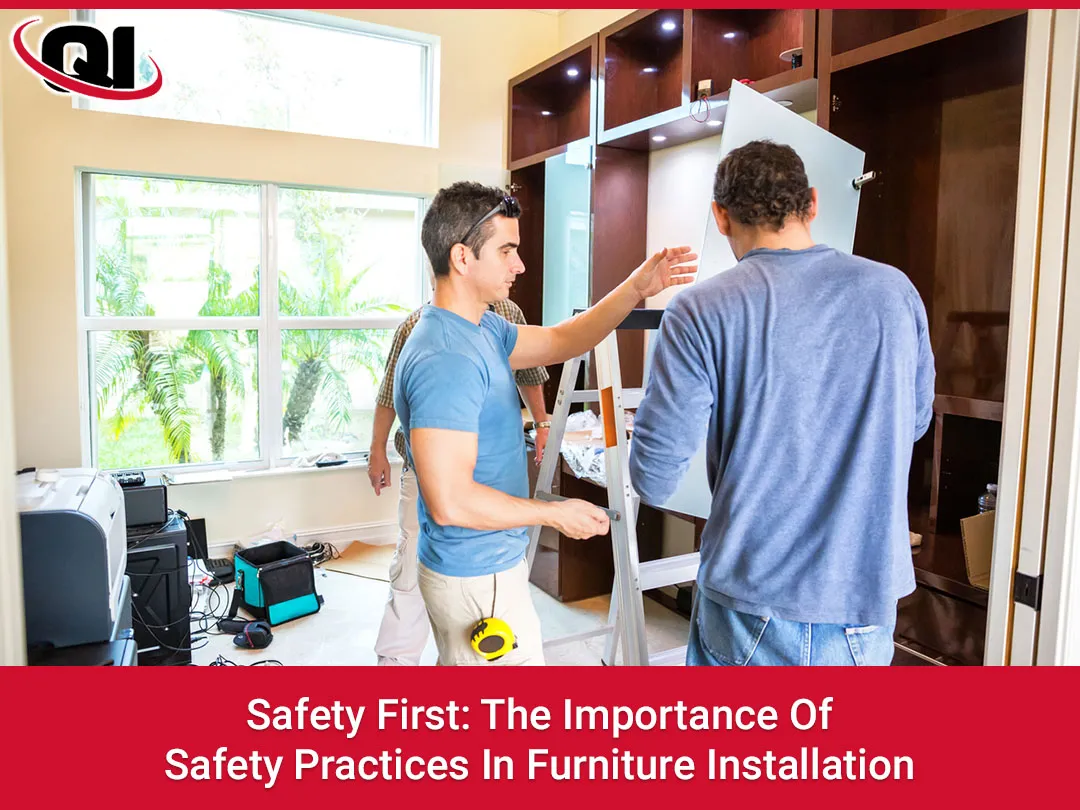 In the bustling city of Orlando, where the demand for quality furniture installation is on the rise, the role of furniture installers is becoming increasingly significant. Safety, often an underemphasized aspect of the installation process, is a cornerstone of professional furniture installation, especially in fast-paced environments. In this blog, we will delve into why safety protocols are not just a mere checklist but a vital component in the realm of furniture installation.
In the bustling city of Orlando, where the demand for quality furniture installation is on the rise, the role of furniture installers is becoming increasingly significant. Safety, often an underemphasized aspect of the installation process, is a cornerstone of professional furniture installation, especially in fast-paced environments. In this blog, we will delve into why safety protocols are not just a mere checklist but a vital component in the realm of furniture installation.
Understanding the Risks
Furniture installation, though it might seem straightforward, involves various risks. From handling heavy objects to using power tools, the potential for accidents is significant. In Orlando, where installations might need to cater to a variety of settings – be it commercial offices or residential spaces – the diversity of tasks adds layers of complexity to the safety equation.
The Role of Safety Protocols
Safety protocols are the backbone of any furniture installation project. These guidelines ensure that every step, from unloading and moving furniture to the actual assembly and placement, is conducted in a manner that minimizes risk. For furniture installers, adhering to these protocols is not just about compliance but also about creating a safe working environment for everyone involved.
Personal Protective Equipment (PPE)
The use of PPE is fundamental. Safety gear such as gloves, hard hats, and eye protection can be the difference between a regular day at work and a trip to the emergency room. Especially in Orlando’s dynamic work environments, where unforeseen hazards can present themselves, the importance of PPE cannot be overstated.
Proper Lifting Techniques
Back injuries are a common concern among furniture installers. Teaching and enforcing proper lifting techniques is crucial. It’s not just about lifting with the knees but also about understanding the best ways to navigate unique spaces, whether a tight corridor in an office building or a spacious living room in a residential area.
Equipment Training
Furniture installation often requires the use of specialized tools and equipment. Installations might range from standard office furniture to elaborate custom pieces, so ensuring that installers are well-trained and comfortable with the tools of their trade is key to maintaining safety standards.
Workspace Management
A cluttered workspace is a hazardous workspace. Maintaining cleanliness and organization during an installation project is paramount. The pace of work might tempt teams to overlook this aspect of safety, but it remains crucial for a successful and safe installation.
Emergency Preparedness
Understanding and preparing for emergencies, including having a first aid kit and knowing evacuation routes, is essential. Conditions such as extreme weather can impact work, so being prepared for any eventuality is vital to safety.
The Impact of Safety on Quality
Safety and quality go hand in hand. A safe installation process is indicative of a professional and conscientious approach. Knowing that furniture installers prioritize safety is reassuring for clients; it’s a marker of quality and reliability.
In the world of furniture installation, particularly in vibrant cities like Orlando, the emphasis on safety is more than a protocol; it’s a testament to the professionalism and dedication of the installers. By adhering to safety standards, furniture installers, such as those found in Orlando, are not just protecting themselves; they are also upholding the quality and integrity of their work, ensuring that every piece of furniture they handle is installed with precision and care. Remember, when it comes to furniture installation, safety is not just a priority; it’s the foundation upon which all successful projects are built.
Picture Credit: iStock
